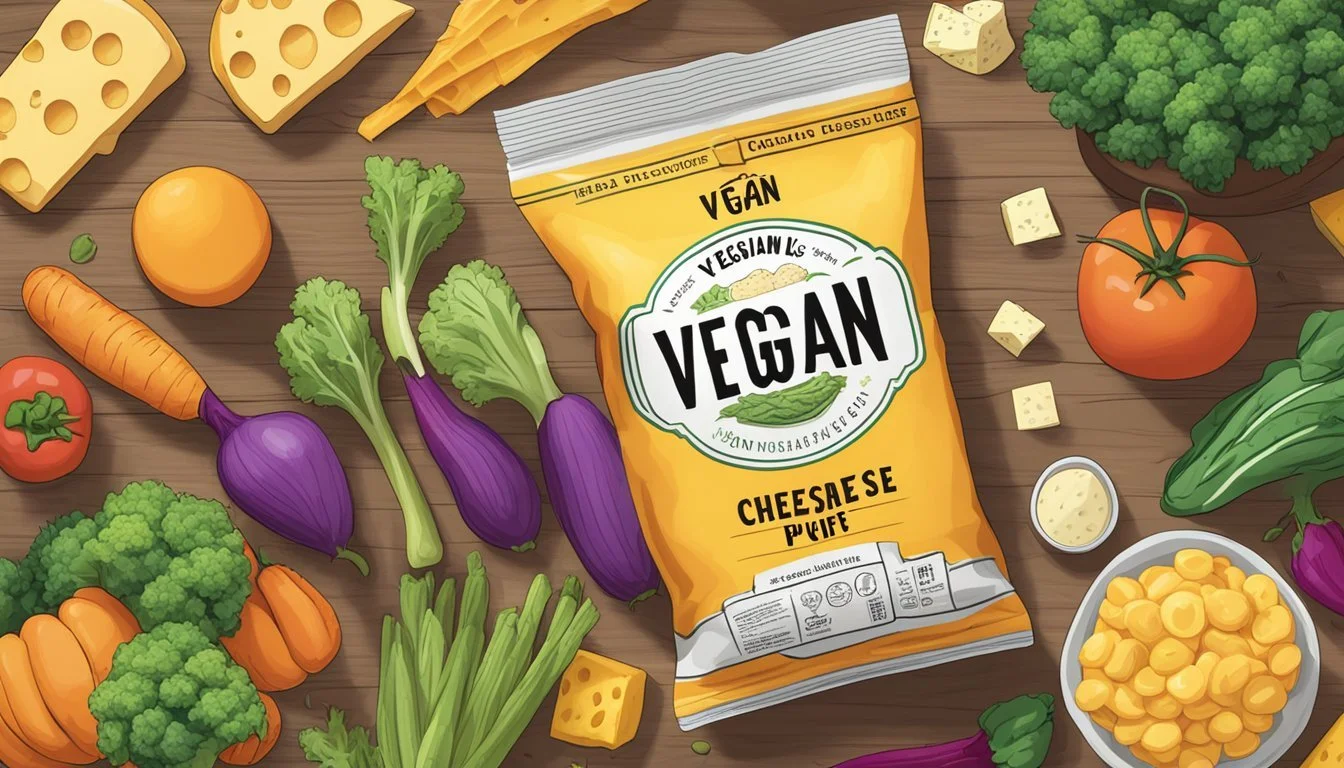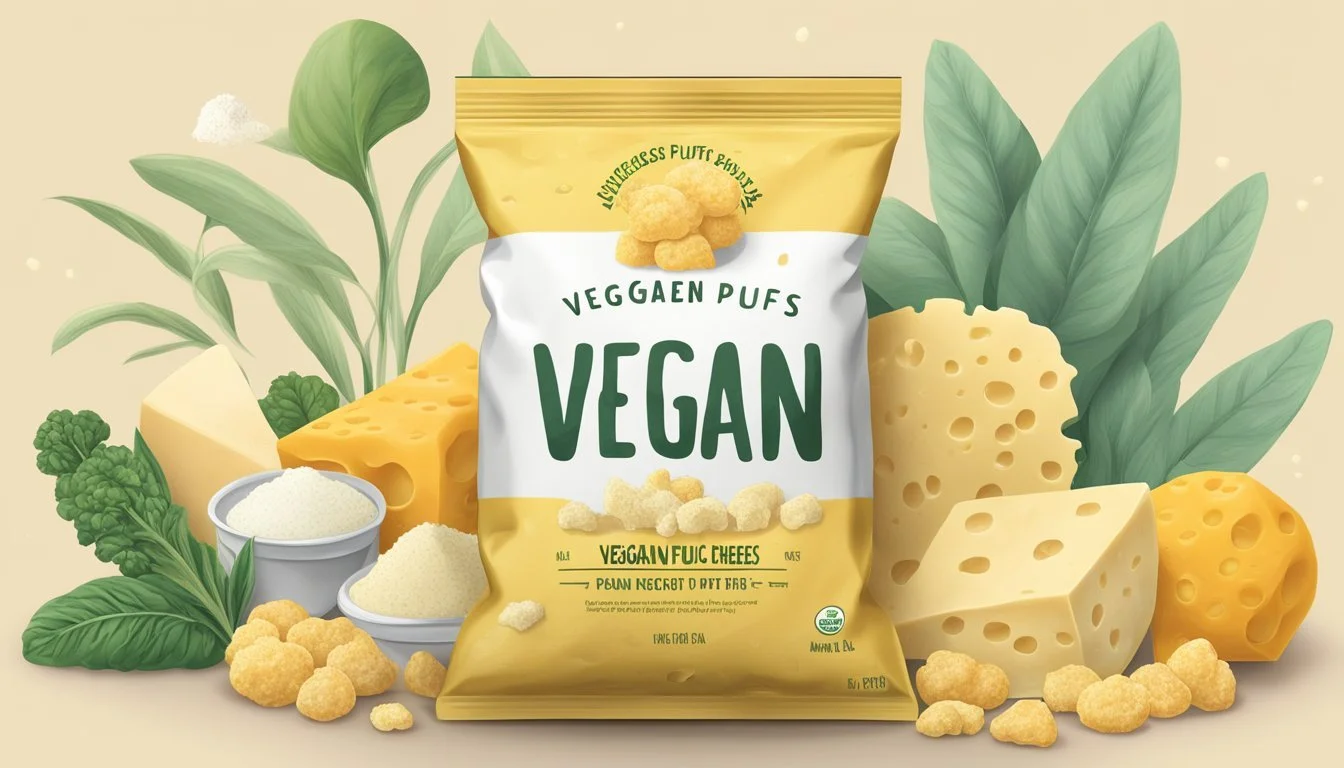Are Cheese Puffs Vegan?
Unveiling the Snack's Ingredients
When exploring the variety of snacks available on market shelves, a common question that arises among those adhering to a vegan diet is whether cheese (What wine goes well with cheese?) puffs are vegan. Traditionally, cheese puffs have been made with dairy cheese and other animal-derived ingredients, which are not suitable for a vegan lifestyle. However, with the growing demand for plant-based alternatives, several companies have developed vegan cheese puffs. These innovative snacks aim to replicate the satisfying crunch and flavor of conventional cheese puffs without the use of any animal products.
Vegan cheese puffs are typically created using a blend of plant-based ingredients to achieve a cheesy flavor. Common base ingredients include grains such as rice or corn, vegetable oils, and various seasonings. The cheese-like taste is often derived from nutritional yeast, a staple in vegan cooking, or from artificial flavors that mimic cheese. Some vegan cheese puffs may also include vegetable proteins to enhance their nutritional profile.
As the vegan snack market continues to evolve, there are multiple brands offering cheese puffs catering to this dietary preference. These products come in a variety of flavors and may additionally cater to other dietary restrictions, including gluten-free or soy-free options. Whether packed in lunch boxes or served at gatherings, vegan cheese puffs provide a dairy-free alternative for those seeking to enjoy a classic snack.
What Makes Cheese Puffs Vegan
When examining cheese puffs that are labeled as vegan, it's pertinent to understand that they are manufactured without any animal-derived ingredients and often use plant-based proteins and vegan cheese alternatives.
Defining Vegan Cheese Puffs
Vegan cheese puffs are snack products that mimic the texture and flavor of traditional cheese puffs while excluding all animal products. They are created for those following a vegan diet or anyone looking to reduce their consumption of animal-derived ingredients.
Common Ingredients in Vegan Cheese Puffs
The foundation of vegan cheese puffs typically involves a combination of chickpea or other legume flours, which contribute to the product's protein content. Vegan cheesy flavor is achieved through the use of nutritional yeast or plant-derived ingredients that mimic cheese flavors. The core ingredients found in various brands of vegan cheese puffs include:
Flour Base: Usually from legumes like chickpeas or peas
Vegan Cheese Flavor: Derived from nutritional yeast or a blend of plant-based seasonings
Plant-Based Proteins: Often included to enrich the nutritional profile
Fats: Typically vegetable or sunflower oil for the cooking process
Vegan Labeling and Certifications
Products that are genuinely vegan will often display specific labeling or certifications to help consumers identify them as suitable for a vegan diet. These certifications are granted by third-party organizations that verify the absence of animal products. A product may be labeled as vegan even if it hasn't received certification, but it's always prudent for consumers to read the ingredient list to ensure compliance with vegan standards.
Non-Vegan Ingredients to Avoid
When determining if cheese puffs are vegan, one must scrutinize the ingredients list for non-vegan items commonly found in snack foods. Two critical areas to focus on are the typical ingredients used in cheese puffs and understanding how these ingredients are listed on food labels.
Typical Cheese Puff Ingredients
Cheese puffs often contain several non-vegan ingredients. Key among these are:
Milk: This is a primary ingredient in cheese puffs, used in the form of powder or derivatives.
Butter: Often used to enhance flavor and add richness.
Cheddar Cheese: Provides the characteristic cheese flavor in traditional cheese puffs.
Saturated Fat: Some cheese puffs may have added fats, which can come from animal sources.
It is important to remember that even if a product does not list "milk" or "cheese" explicitly, derivatives of these, such as casein or whey, are also non-vegan and commonly used in snack foods.
Understanding Food Labels
Food labels can be complex, but certain terms indicate non-vegan ingredients:
"Natural Flavors": Can sometimes include animal-derived ingredients. Consumers should contact manufacturers if the source is not specified.
Ingredient Order: Ingredients are listed by weight, with the largest quantities first. High amounts of non-vegan items like milk or butter indicate the product is mostly non-vegan.
E-Numbers: Some additives, such as E471 (which can be derived from animal fats), are not vegan.
Because cheese puffs are inherently a dairy-based snack, those following a strict vegan diet should be cautious and look for certified vegan alternatives which avoid these non-vegan components.
Popular Vegan Cheese Puff Brands
The market offers a variety of vegan cheese puffs, providing plant-based and dairy-free snack alternatives. These brands have become popular for their flavor and nutrition profile, catering to vegans and health-conscious consumers alike.
From the Ground Up
From the Ground Up is known for its innovative use of vegetables in snack foods. Their vegan cheese puffs are made using cauliflower, offering a nutritious twist to the classic puff. They also provide vegan cheddar-flavored crackers which are a hit among those looking for a plant-based cheesy snack.
Beanfields and Ka-Pop
Beanfields specializes in bean-based snacks and produces vegan cheese puffs with a variety of flavors such as nacho, jalapeño nacho, cheddar, and cheddar and sour cream. These puffs boast a substantial protein content with four grams of plant-based protein per serving. Ka-Pop, on the other hand, uses ancient grains for their puffs which are free from the top 12 allergens, making them an inclusive snack option for those with dietary restrictions.
Hippeas and LesserEvil
Hippeas offers a range of puffed snacks that stand out for their use of chickpea flour, contributing to a higher protein content and fiber. Their vegan cheddar flavor is a testament to the possibility of creating a satisfying cheesy taste without the dairy. LesserEvil has merged vegan and paleo requirements to create their "No Cheese" Cheesiness Paleo Puffs. They are certified organic, kosher, and use nutritious ingredients to align with various health-oriented diets.
How to Make Homemade Vegan Cheese Puffs
Creating vegan cheese puffs from scratch involves selecting appropriate plant-based ingredients and employing precise baking techniques. The result is a snack offering a harmonious blend of cheesy flavors and airy textures without using any animal-derived products.
Required Ingredients and Substitutes
To begin making homemade vegan cheese puffs, one must gather the following:
1 cup of water
1/2 cup of alternative milks (such as soy or almond milk)
1/4 cup of vegan butter or margarine
1 cup of all-purpose flour (use gluten-free options if necessary)
1/4 cup of nutritional yeast for the cheesy flavor
1 teaspoon of baking powder (ensure it's gluten-free if required)
1/2 cup of vegan cheese, grated (options include vegan parmesan or a spicyish vegan cheese for more kick)
Seasonings such as salt, garlic powder, or rosemary per your flavor preference
For additional protein, chickpea flour can be used as a substitute in part for all-purpose flour, adapting the recipe for those seeking a nutrient boost.
Baking Techniques and Tips
The technique for baking perfect vegan cheese puffs is comparable to traditional choux pastry but with vegan substitutions. Here are the steps:
Preheat your oven to 375°F (190°C) and line a baking sheet with parchment paper or a silicone baking mat to prevent sticking.
In a saucepan, heat the water, alternative milk, sugar, and vegan butter until the mixture simmers.
Add the flour and baking powder all at once, stirring vigorously until a dough forms and pulls away from the sides of the pan.
Allow the dough to cool slightly before mixing in the grated vegan cheese and nutritional yeast.
Form small balls of the dough and place them on the prepared baking sheet, giving them space to expand.
Bake for 25-30 minutes until puffed up and golden brown in color.
To ensure uniform cooking, rotate the baking sheet halfway through the baking period.
Flavoring Your Vegan Cheese Puffs
A key to the allure of cheese puffs is their robust flavor profile, which can be tailored to personal preference even in their vegan form. Experiment with the following:
Nutritional yeast: A staple in vegan cooking that provides a savory, cheesy flavor.
Chickpea flour: Can add a subtle nuttiness and boost the protein content.
Seasonings: Incorporate salt and garlic powder for a classic taste, or add herbs like rosemary for a distinctive twist.
Vegan cheeses: Choose from a range of vegan cheese flavors to mimic traditional cheese puffs, such as sharp vegan parmesan or spicy vegan cheese alternatives.
This personalized approach allows the creation of vegan cheese puffs that cater to a variety of taste preferences while maintaining a vegan standard.
Health Considerations of Vegan Cheese Puffs
When evaluating the health aspects of vegan cheese puffs, it's vital to consider both their nutritional content, such as the presence of plant-based protein and absence of cholesterol, and how they stack up against their traditional counterparts.
Nutritional Benefits and Concerns
Nutritional Benefits:
Plant-Based Protein: Vegan cheese puffs often contain protein from plant sources. For instance, some brands incorporate chickpea flour, which contributes around four grams of protein per serving.
Fiber: The inclusion of ingredients like navy beans in certain vegan cheese puff recipes can provide beneficial fiber, approximately two to three grams per serving.
Gluten-Free Options: Several vegan cheese puffs are made using gluten-free ingredients, catering to those with gluten sensitivities or celiac disease.
Cholesterol-Free: Unlike traditional cheese puffs, vegan versions do not contain dairy, making them free of cholesterol, which is beneficial for cardiovascular health.
Nutritional Concerns:
Saturated Fat: Consumers should be aware of the saturated fat content, which can be high in some processed snacks, regardless of whether they're vegan.
Nutritional Yeast: Often used to replicate the cheesy flavor, nutritional yeast is a common ingredient in vegan cheesy snacks, but it's important to choose brands that fortify with B vitamins for added health benefits.
Comparing Vegan and Traditional Cheese Puffs
Vegan Cheese Puffs:
Ingredients: Predominantly use plant-based ingredients and flavorings, such as nutritional yeast, to achieve a similar taste to cheese.
Health Profile: Typically have no cholesterol and may have lower levels of saturated fats compared to their dairy counterparts.
Traditional Cheese Puffs:
Ingredients: Reliant on dairy cheese, which can contribute to higher levels of saturated fats and cholesterol.
Health Profile: May not offer the fiber and plant-based protein found in their vegan alternatives, making them less favorable for those seeking these nutrients.
Storing and Reheating Tips
Proper storage and reheating are critical to maintaining the freshness and desirable texture of cheese puffs. Below are specific guidelines to help preserve their quality.
Best Practices for Freshness
When storing cheese puffs, it's essential to seal them in an airtight container to prevent moisture loss and staleness. They should be kept in a cool, dry place away from direct sunlight. For homemade cheese puffs, one should allow them to cool completely before storage to avoid condensation which can lead to sogginess.
Storage Duration
Room temperature: up to 1 day
Refrigerator: 3-4 days
Freezer (for long term): Up to 2 months
Reheating for Optimal Texture and Taste
To reheat cheese puffs, using an oven is recommended to achieve the best texture. Spread the cheese puffs on a baking sheet in a single layer to ensure even reheating. Preheat the oven to 350°F (175°C), and heat them for about 5 minutes or until they are warm throughout and crispy on the outside.
Reheating Steps:
Preheat the oven to 350°F (175°C).
Place cheese puffs on a baking sheet.
Bake for 5-10 minutes.
Check the cheese puffs frequently, as reheating times may vary based on their size and density.






